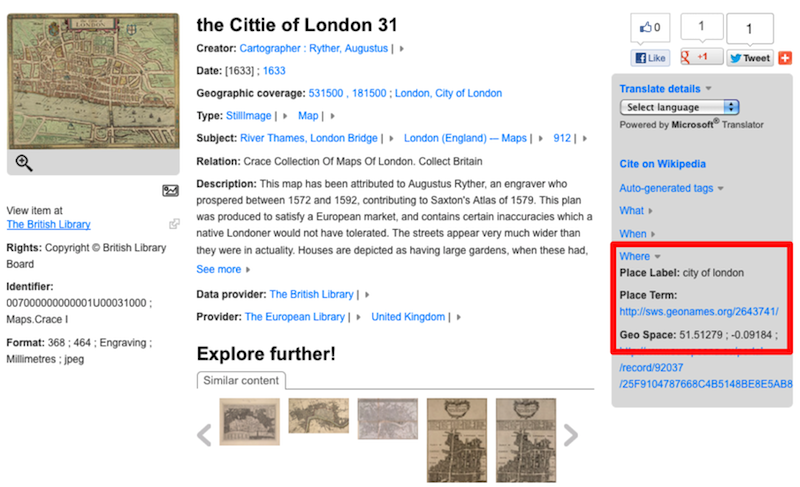Europeana provides access to millions of objects gathered from hundreds of libraries, archives, museums and other cultural institutions throughout Europe. To do so, it gathers descriptive metadata and links to Web resources from all of these institutions. The result is a set of highly heterogeneous metadata.
This metadata has hitherto been processed by converting it to a very simple, flat, common-denominator format. This solution gets in the way of putting our data where users and application builders can benefit from it—or use it to build better services.
In particular, the approach often sacrifices the richness of finer-grained metadata—metadata that has been curated by our partners with often with great care. Losing such detail means missing an opportunity to place the objects in a rich cultural context, with links to related people, places, and other objects.
Moreover, a rigid and uniform data model lends itself poorly to open publication or to metadata that meets the diverse requirements of a wide range of consumers. This technical approaches hinders us from meeting the objectives of our open data agenda.
In order enhance the way Europeana harvests, manages and publishes metadata, we have developed a new, Semantic Web-inspired approach: the Europeana Data Model (EDM). This community-developed model re-uses existing Semantic Web vocabularies (ontologies) such as Dublin Core, SKOS, and OAI-ORE, and adapts them to the Europeana context. EDM allows for the representation of multiple perspectives on a given cultural object. It also enables the representation of complex or hierarchically structured objects, such as in the archive and library domains. EDM allows us to represent contextual information, in the form of entities—places, agents, time periods—explicitly represented in the data and connected to a cultural object. We have documented several case studies that illustrate the challenges and benefits of applying EDM to cultural heritage collections.
In parallel, Europeana has started enriching the metadata it receives by creating links to resources available as Linked Data, such as GeoNames (for places) and GEMET (for general subjects). We have begun using DBpedia. The screenshot below shows an example object enriched with a link to GeoNames' City of London. Better use of other resources of relevance to the cultural heritage community, such as the Virtual International Authority File (VIAF), stand high on our agenda. These resources are massively multilingual—a crucial advantage for enabling good-quality search services in the European context.

Figure 1: Screenshot of a page on an artefact enriched with Genames data. (A larger image is also available.)
We have published part of Europeana metadata as Open Linked Data at data.europeana.eu under the terms of CC0, the Creative Commons' Public Domain Dedication. We hope it will be used by third parties to develop innovative applications and services. This would in turn help to convince our partners to release more open data. In order to make our message more accessible to the public, we have released an animation explaining the connection between Linked Data technology and Open Data policies.

Figure 2: Animation explaining the connections between Linked Data and Open Data policies (click on the image to start)
Europeana firmly believes in the benefits of Semantic Web and Linked Data technology for the culture sector, as outlined in the reports of the W3C Library Linked Data Incubator Group. The following are of special interest:
RDFa, RDF(S), OWL, SKOS, SPARQL, public datasets, public vocabularies and in-house vocabularies.
© Copyright 2012, Europeana